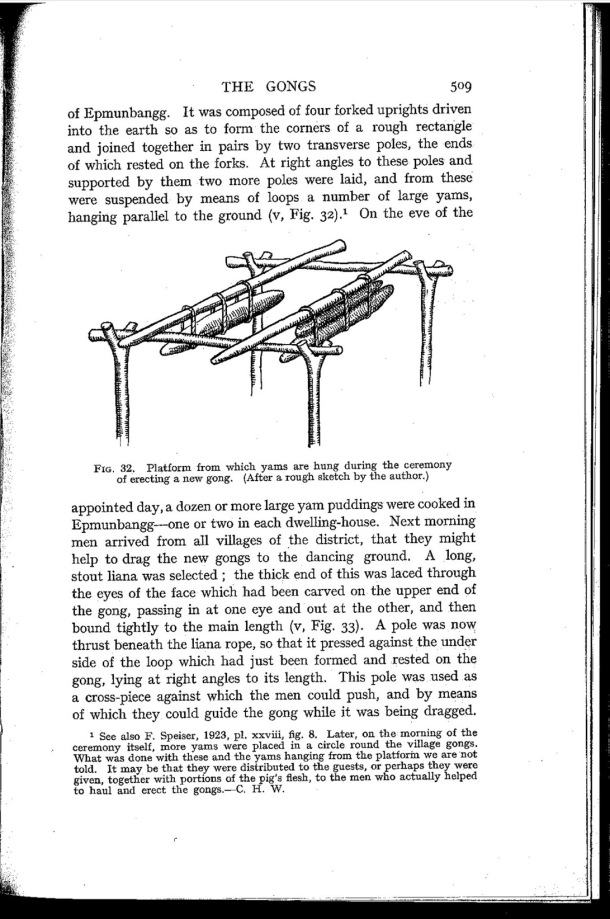|
|  [Note: this transcription was produced by an automatic OCR engine]
1..
»~.
1
, 1
2
ii;
t‘
1.,
F
THE GONGS 509
of Epmunbangg. It was composed of four forked uprights driven
into the earth so as to form the corners of a. rough rectangle
and joined together in pairs by two transverse poles, the ends
of which rested on the forks. At right angles to these poles and
supported by them two more poles were laid, and from these
were suspended by means of loops a number of large yams,
hanging parallel to the ground (v, Fig. 32).‘ On the eve of the
is _, §
t
Y5‘
FIG. 32. Platlorm from which yams are hung during the ceremony
of erecting a new gong. (After a rough sketch by the author.)
appointed day, a dozen or more large yam puddings were cooked in
Epmunbangg—one or two in each dwelling-house. Next morning
men arrived from all villages of _the district, that they might
help to drag the new gongs to the dancing ground. A long,
stout liana was selected ; the thick end of this was laced through
the eyes of the face which had been carved on the upper end of
the gong, passing in at one eye and out at the other, and then
bound tightly to the main length (v, Fig. 33). A pole was now
thrust beneath the liana rope, so that it pressed against the under
side of the loop which had just been FORMED and rested on the
gong, lying at right angles to its length. This pole was used as
a cross-piece against which the men could push, and by means
of which they could guide the gong while it was being dragged.
1 See also F. Speiser, 1923, pl. xxviii, ï¬Åg. 8, Later, on the morning of the
ceremony itself, more yams were placed in a. circle round the village gongs.
What was done with these and the yams hanging from the platform we are not
hold. It may be that they were distributed to the guests, or perhaps they were
given, together with portions of the pig's flesh, to the men who actually helped
to haul and erect the gongs.—C. H. W.
1
1
ll
>
|